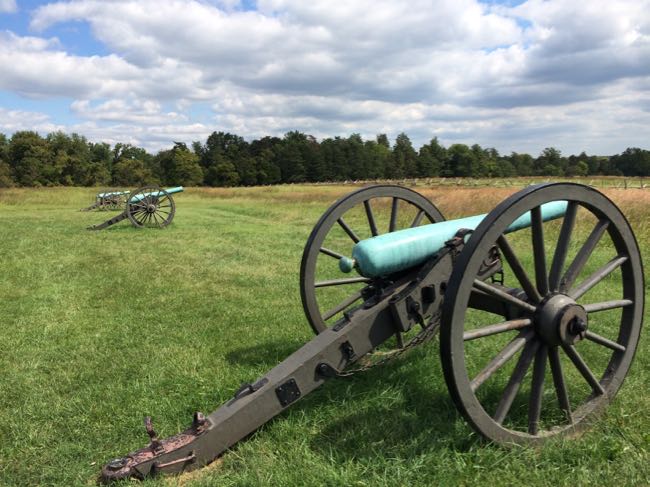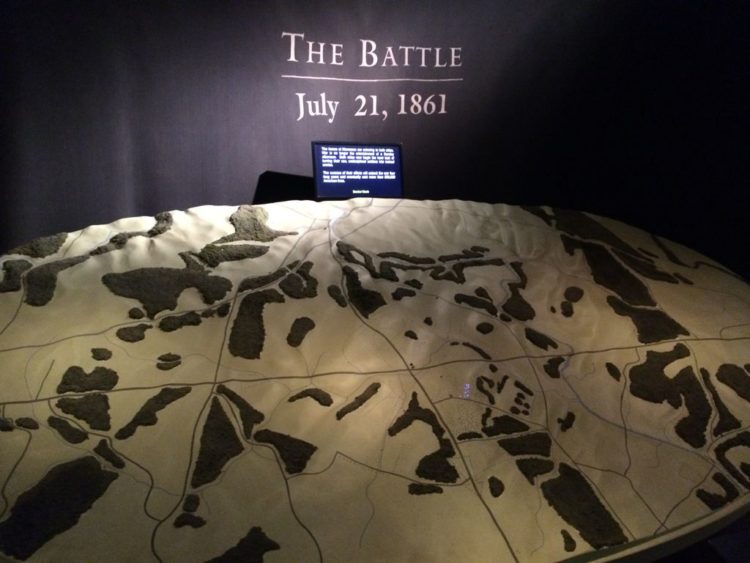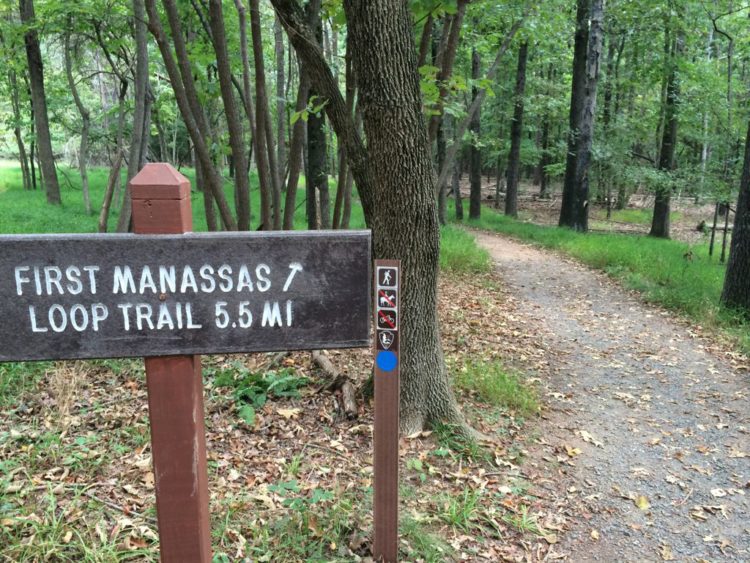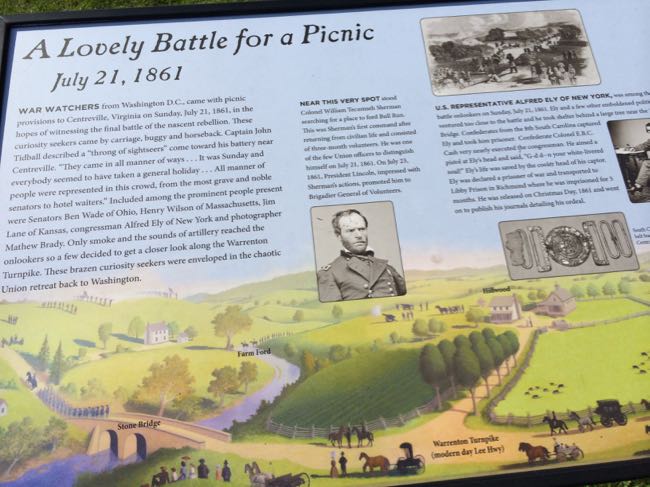Updated on November 7, 2023 by Julie McCool
Take a walk through history on the First Manassas Loop trail at Manassas National Battlefield, then relax with a glass of Virginia wine at The Winery at Bull Run. We love a hike and wine day trip, and it's even better with history added to the mix.
At Manassas National Battlefield Park, the National Park Service preserves and interprets the site of two major battles of the Civil War. This unique history makes Manassas Battlefield one of the top attractions in Northern Virginia.
Disclosure: This article may contain affiliate links. We will make a small commission from these links if you order something, at no additional cost to you.
Manassas National Battlefield Park
On July 21, 1861, two new armies clashed near Manassas in the first big land battle of the war. The Confederate troops won the battle, but there were significant losses on both sides. A year later, the armies met here again and the Confederate army had another solid victory.
The battles are known by two names. Union forces referred to the First Battle of Bull Run and the Second Battle of Bull Run. To the Confederates, the conflicts were the Battle of First Manassas and the Battle of Second Manassas.
Today, the parkland looks much like it did during the time of the battles. Several buildings, armaments, and extensive historical markers tell the story of both of the battles fought here. Even the two major roadways which cross the park—now routes 29 and 234—played a part in the battle.
The National Park Service maintains an excellent Visitor Center off of Sudley Road, and first-time visitors should begin here. A 45-minute film describing both the First and Second Battles of Manassas plays every hour. If time is short, watch the 6-minute narrated map display which shows Union and Confederate positions during the first battle.
First Manassas Loop Hike, Manassas National Battlefield
The 5.5 mile First Manassas Trail covers much of the ground that Union and Confederate troops traveled during their first encounter. Some portions of the hike are wooded, but most are in open fields, so this hike is best for cool weather or a cloudy day. There are some steep and rocky sections, but most of the terrain is moderate or easy.
You can access the trail from the Visitor Center or Stone House, but we like to begin the hike at the Stone Bridge parking area, on the eastern edge of the park.
The Stone Bridge over Bull Run was destroyed during the Civil War, but the current bridge follows a similar design. Once you cross the bridge, head right and follow the trail along the river until it turns up the hill to you left and enters the meadow.
The trail borders Bull Run for a bit then turns and crosses a meadow. Here, you'll pass Pittsylvania, a mansion owned by the Carter family. Used as a hospital during the war (like many buildings), we were impressed with the description by one eyewitness of the wounded lying on four-poster beds in the dilapidated mansion.
Cannons and signs on Marshall Hill mark the site of the Union advance. From the hilltop, you'll see the Stone House, which was constantly under fire during the battles. Sometimes Confederate and sometimes Union armies used the building as a hospital during the battles.
The Stone House is open seasonally on weekends and is definitely worth visiting if it is open during your hike. Inside, look for two names carved into the floor by wounded Union soldiers during the second battle.
The trail crosses busy route 29 at The Stone House and there is no crossing light so use caution. After crossing the road, head back uphill in open fields toward Henry House and the Visitor Center. This area was the site of some of the heaviest fighting during the battle.
The rebuilt Henry House marks the site where 85-year-old Judith Carter Henry became the only civilian casualty of the first battle (her grave is nearby). Behind the house, a monument honors the dead from both sides of the conflict. If you have time, continue around the Henry Hill loop to the statue of Stonewall Jackson and other markers.
When you reach the Visitor Center, stop in to watch the video or the fiber-optic map presentation (and maybe buy a souvenir at the store). The First Manassas Trail continues at the end of the parking lot, crossing the Henry Hill loop before heading back into the woods. It's about 2 miles from the Visitor Center back to the Stone Bridge parking area.
Alternate Family-friendly Loop Hike
If you're looking for a shorter, family-friendly hike that's good for younger kids, the Stone Bridge Loop Trail focuses on the area's natural resources. The trail combines a wooded area next to Bull Run and a long stretch of boardwalk. The boardwalk is also a nice spot for bird-watching.
The Winery at Bull Run
All that hiking had to make you tired and thirsty. Fortunately, if you're parked at the Stone Bridge, you can see the entrance to The Winery at Bull Run calling to you. Not only will you find delicious Virginia wines here, but you can also continue your history lesson. This is one of only two Fairfax County wineries, and it's a beautiful place to relax after a hike.
Spectators from as far away as Washington DC set up picnics on the hillside here to watch the battle. When some spectators decided to get a closer look they got caught up in the chaotic Union retreat. New York Rep Alfred Ely got a little too close and was taken prisoner by Confederate forces.
The Winery property has preserved the remains of buildings that stood here during the 1800s, including the stone patio that was present during the Battle of First Manassas. Inside the Tasting Barn you'll find interesting displays of artifacts found on the property and other historic information.
There are lots of options for relaxing with your wine including rockers and tables on the patio, and plenty of indoor seating. There are two large outdoor areas with picnic tables, one for adults and one for families with children.
A glass of Viognier, a comfy rocking chair, and a view of the Virginia countryside. What a nice way to finish a day of history and hiking.
Follow Fun in Fairfax VA on Facebook, Twitter, Pinterest, and Instagram for more fun places to visit and things to do in Northern Virginia and surrounding areas.


















